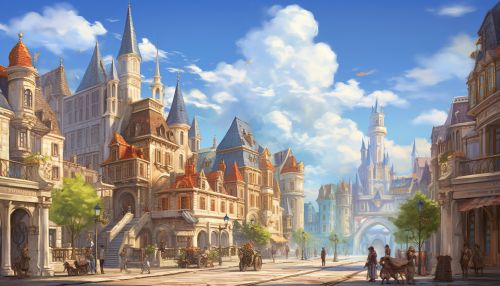Renaissance
Introduction
The Renaissance was a period in European history marking the transition from the Middle Ages to Modernity and covering the 15th and 16th centuries. It occurred after the Crisis of the Late Middle Ages and was associated with great social change. In addition to the standard dictionary definition, the term "Renaissance" is also used in a more general context to mean a period of vigorous economic and cultural growth.


Historical Overview
The Renaissance began in the Italian city-states, most notably Florence, and then spread to the rest of Europe. The rise of a money economy and urban centers was a key factor in the rise of the Renaissance. This period was also characterized by the growth of a new, wealthy urban class, the bourgeoisie, which had the means and the desire to support the arts.
Cultural Changes
The Renaissance saw significant cultural changes, including a renewed interest in the classical knowledge of the Greeks and Romans. This led to a revival of artistic, literary, and scientific learning, with many Renaissance scholars seeking to integrate their discoveries into a holistic worldview. This period also saw a shift in the way people viewed themselves and their world. The Renaissance marked a move towards a more humanistic and individualistic understanding of the world, in contrast to the more religious and communal oriented Middle Ages.
Art
Renaissance art, which includes architecture, painting, sculpture and decorative arts, is the most recognized in this period. Artists such as Leonardo da Vinci, Michelangelo, and Raphael are widely recognized as some of the greatest artists in history. Their works, including the Mona Lisa, The Last Supper, and the Sistine Chapel ceiling, are some of the most famous artworks in the world.
Science
The Renaissance also saw significant developments in science. This period saw the development of new scientific techniques and the discovery of new scientific knowledge. The scientific revolution of the Renaissance was characterized by a new emphasis on experimental observation and the study of the natural world. This was a departure from the more theoretical approach of the Middle Ages, and it laid the groundwork for the scientific revolution of the 17th century.
Religion
The Renaissance was also a time of religious change and conflict. The dominant religion in Europe during the Renaissance was Christianity, with the Catholic Church being the most powerful institution. However, the Renaissance also saw the beginning of the Protestant Reformation, which was a major schism within Western Christianity.
Conclusion
The Renaissance was a period of great cultural and intellectual change in Europe. It was a time of renewed interest in the classical knowledge of the Greeks and Romans, and a time of significant scientific and artistic development. The Renaissance laid the groundwork for the modern world and continues to influence our understanding of the world today.
